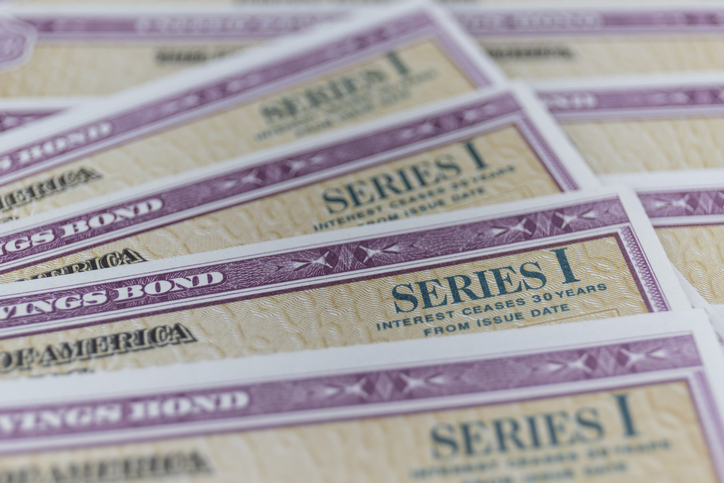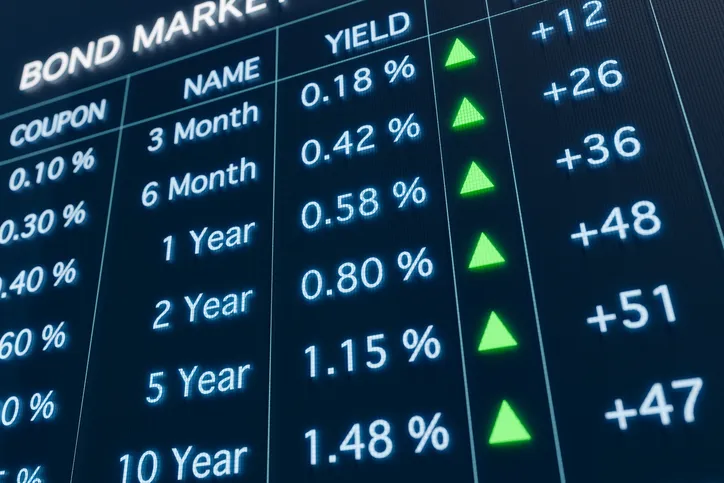If you’ve ever watched bond prices fall while interest rates rise, you’ve seen one of the core mechanics of the bond market. These two factors move in opposite directions because of how bonds are priced relative to current market rates. While bonds are often viewed as a steadier part of an investment portfolio, their value can still shift when interest rates change. Understanding this relationship can help you make informed decisions about how rate movements may affect the value of the bonds you hold.
A financial advisor can help you review how bond prices respond to interest rate changes and consider how that may affect your investment strategy.
How Bond Prices Work
Bonds are essentially loans that investors make to governments, municipalities or corporations. In exchange, they receive regular interest payments and the eventual return of principal at maturity. Each bond carries a face value, typically $1,000, which the issuer will repay at the end of the term. The price an investor pays for a bond on the open market, however, isn’t always equal to its face value. It can fluctuate based on changes in prevailing interest rates, market conditions and investor demand.
When a bond is first issued, its price generally starts at par, or 100% of its face value. The bond’s coupon rate, the annual interest payment as a percentage of the face value, is fixed at issuance. Once the bond begins trading in the secondary market, its price adjusts to reflect shifts in the broader interest rate environment. If newer bonds offer higher yields, existing bonds with lower coupon rates may become less appealing, which can lead to lower market prices.
How Interest Rates Work
Interest rates represent the cost of borrowing money and influence many financial decisions, from mortgages and savings accounts to corporate loans and government debt. Central banks, such as the Federal Reserve in the U.S., typically influence interest rates by adjusting benchmark rates to help manage economic growth and address inflation. When the Fed introduces an interest rate hike, borrowing can become more expensive for consumers and businesses, which may slow economic activity. When it lowers rates, credit can become cheaper, which may encourage spending and investment.
Interest rates also reflect expectations about inflation and the broader economy. When inflation rises, lenders often demand higher rates to compensate for the potential loss of purchasing power over time. Conversely, during periods of slow growth or recession, rates may decline as demand for borrowing falls and policymakers seek to support economic activity. This cyclical behavior shows how interest rates can both reflect economic conditions and influence them.
Why Do Bond Values Fall When Interest Rates Rise?

The inverse relationship between bond prices and interest rates comes down to simple market mechanics. When interest rates rise, newly issued bonds generally offer higher coupon payments to reflect the new rate environment. Older bonds, however, continue paying the lower rates they were issued with. As a result, investors may not be willing to pay full price for those older bonds when higher-yielding alternatives are available. To remain competitive, the prices of existing bonds typically decline until their yields align with current interest rate levels.
Imagine you hold a bond paying 3% annual interest but new bonds are offering 5%. Most buyers would expect a lower purchase price for your bond so that its effective yield matches the 5% available elsewhere. That price adjustment reflects the decrease in the bond’s market value. The longer the bond’s maturity, the more sensitive its price may be to rate changes, a concept known as duration. Longer-term bonds lock in older rates for more time, so their prices often respond more sharply when interest rates rise.
A decline in market price doesn’t automatically mean an investor has realized a loss. The issuer is still scheduled to repay the bond’s face value at maturity, and interest payments continue as long as the issuer meets its obligations. The lower market value matters only if the investor sells the bond before maturity, when prices reflect the higher-rate environment. For investors who trade frequently or who may need liquidity, rising rates can affect portfolio values in the short term.
Examples of How Interest Rates Impact Bond Values
To see how bond prices and interest rates interact, let’s break down an example of a 10-year bond with a $1,000 face value and a 4% annual coupon, which pays you $40 in interest each year. This helps show how changes in market rates affect what your bond is worth.
When market rates go up, newly issued bonds start offering higher coupons. For example, if new bonds pay 6% while yours pays 4%, investors can earn $60 per year instead of $40. To attract a buyer, your bond must sell at a discount so its yield lines up with the new 6% rate. In that situation, the market value might fall to around $875.
When rates move in the other direction, the effect flips. If prevailing rates drop from 4% to 2%, your 4% bond becomes more appealing than new bonds paying only $20 per year. Investors may pay a premium to secure that higher income stream, which can push the market price above $1,000, potentially around $1,125 depending on how long the bond has until maturity.
Duration also plays a key role in how much the price moves. A bond maturing in the near term will not shift much because the principal is returned soon. Longer-term bonds, such as those with 20-year maturities, have more time for interest rate changes to influence their value, so their prices tend to rise or fall more sharply.
Bottom Line

Bond prices and interest rates move in opposite directions, and the reason comes down to how the market adjusts to keep yields aligned with current conditions. Bond prices shift as interest rates change, and those movements affect the value of what you hold. Knowing how pricing works and why rates influence returns can help you understand how bonds fit into a diversified portfolio. Whether your focus is income, stability or broad market exposure, being aware of how rate changes can affect your holdings can support more informed choices.
Investment Planning Tips
- A financial advisor can help you evaluate how bond choices, maturities and interest-rate shifts fit into your overall investment plan. Finding a financial advisor doesn’t have to be hard. SmartAsset’s free tool matches you with vetted financial advisors who serve your area, and you can have a free introductory call with your advisor matches to decide which one you feel is right for you. If you’re ready to find an advisor who can help you achieve your financial goals, get started now.
- If you want to diversify your portfolio, here’s a roundup of 13 investments to consider.
Photo credit: ©iStock.com/Torsten Asmus, ©iStock.com/jetcityimage, ©iStock.com/PeopleImages
